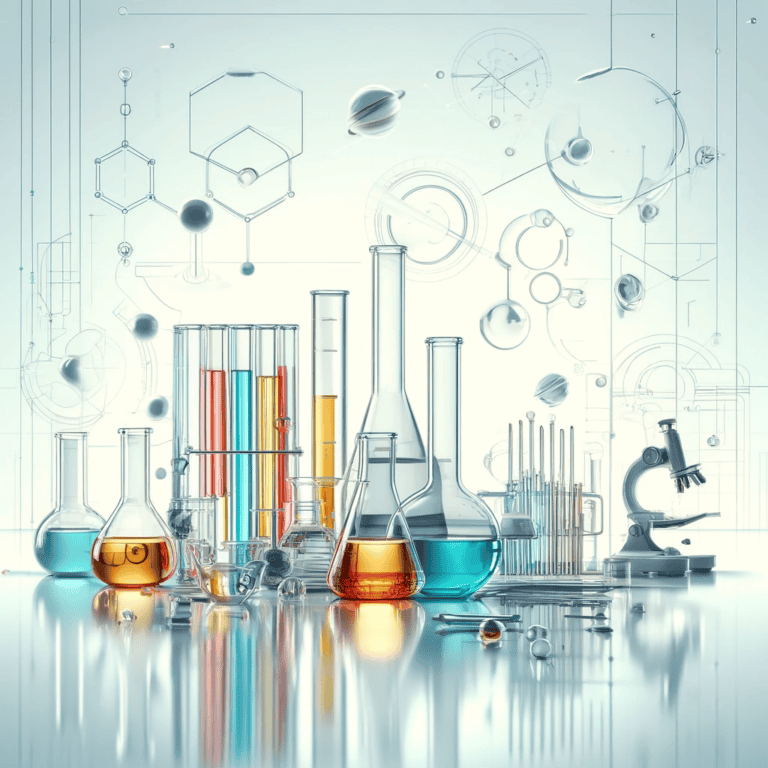Earth-Abundant Transition Metal Catalysis
This review investigates the use of earth-abundant transition metals as catalysts, focusing on their processes, uses, and promise in driving sustainable chemical synthesis. We underline their economic and environmental benefits, which point to a brighter future.

Introduction to Earth-Abundant Transition Metals
Earth-abundant transition metals have received a lot of interest in catalysis because of their environmental and economic advantages over rare and costly alternatives. These metals, which include early transition metals like Ti, Cr, and W, as well as common transition metals like Fe, Co, and Ni, provide long-term solutions for a variety of catalytic processes (Liu et al., 2021). The utilization of earth-abundant first-row transition metals, which are known for their cost-effectiveness and sustainability, is increasingly being investigated for catalytic applications, providing more ecologically friendly and economically attractive options (Gandeepan et al., 2018).
Recent research has emphasized the potential of earth-abundant transition metals in a variety of catalytic processes, including borrowing hydrogen catalysis and C-H activation, demonstrating their diversity and effectiveness in catalytic transformations (Reed-Berendt et al., 2019). Transition metals such as iron and cobalt have been discovered as interesting replacements, offering not only environmental benefits but also new opportunities in catalysis (Chirik, 2015). Furthermore, the use of 3d transition metals for enantioselective C-H activation reveals an increasing interest in developing more environmentally friendly catalytic techniques (Loup et al., 2019).
The distinct features of earth-abundant transition metals, such as manganese, have been used for catalytic reactions such as dehydrogenative coupling and hydrogenation, demonstrating their potential to drive catalytic transformations (Mukherjee et al., 2016). Furthermore, the discovery of catalysts based on earth-abundant metals for water oxidation processes emphasizes their importance in sustainable catalysis (Lin et al., 2018). The use of first-row transition metals such as iron, copper, and nickel for catalytic processes is part of a larger trend toward more cost-effective and environmentally benign catalytic approaches (Huo et al., 2022).
The study of earth-abundant transition metals in catalysis provides a big step toward sustainable and cost-effective catalytic processes. This research and development not only provides environmentally beneficial alternatives, but also opens up new prospects in catalysis by harnessing the abundance and unique features of these metals.
Mechanisms of Catalysis
To understand the principles of catalysis involving earth-abundant transition metals, it is critical to explore how these metals operate as catalysts in chemical reactions when compared to standard precious metal catalysts. Transition metals plentiful on Earth, such as Mn, Fe, Co, Ni, and Cu, are increasingly being used to assist various C-C and C-N bond-forming reactions, highlighting their potential for sustainable catalysis (Reed-Berendt et al., 2019). These metals exhibit unusual reactivity patterns from standard precious metals, giving new options for catalytic reactions.
A noteworthy component of catalytic mechanisms using earth-abundant transition metals is their ability to selectively activate C-H bonds enantioselectively, which represents a substantial advance in recent studies (Loup et al., 2019). This enantioselective transformation via organometallic C-H activation by 3d base metals demonstrates a different mechanism when compared to typical precious metal catalysts. Furthermore, the use of low-valent cobalt catalysis has opened up new options for C-H functionalization, demonstrating novel catalytic processes (Gao & Yoshikai, 2014).
Furthermore, the integration of photoredox and iron catalysis has facilitated the emergence of novel chemical transformations, demonstrating the synergistic combination of visible-light excitation and one-electron redox processes with traditional organometallic reaction mechanisms (Wangelin et al., 2020). This strategy deviates from typical catalytic mechanisms and stresses the novel ways used with earth-abundant transition metals.
Unlike platinum-group metals, which have historically been important catalysts in industrial reactions, earth-abundant transition metals have unique mechanisms that provide high activity and thermal stability, contributing to a sustainable catalyst economy (Bullock et al., 2020). Catalysis with these metals frequently includes oxidative addition and reductive elimination stages, which are critical activities in many catalytic cycles (Arévalo & Chirik, 2019).
Catalysis with earth-abundant transition metals involves unique reactivity patterns, enantioselective transformations, synergistic integration with photoredox catalysis, and distinct processes such as oxidative addition and reductive elimination. These mechanisms distinguish earth-abundant transition metal catalysts from standard precious metal catalysts, opening up new opportunities for sustainable and cost-effective catalytic processes.
Applications and Future Directions
Current uses of earth-abundant transition metal catalysis in industry and research include a diverse spectrum of catalytic reactions that have important implications for sustainable chemistry practices. Earth-abundant transition metals such as Mn, Fe, Co, Ni, and Cu have been used in a variety of catalytic processes, including borrowing hydrogen catalysis, C-H activation, hydrogenation, and dehydrogenative coupling Reed-Berendt et al. (2019); Mukerjee et al., 2016; Elangovan et al., 2016). These metals have shown remarkable efficiency and selectivity in promoting reactions such as reductive amination, alkene hydrofunctionalization, and hydrogenative desulfurization, demonstrating their versatility and potential for green synthesis (Liu et al., 2021; Wang et al., 2022; Guo et al., 2021).
The use of earth-abundant transition metal nanocatalysts has grown in popularity, with nanoparticles of Mn, Fe, Co, Ni, and Cu promising improved catalytic performance and efficiency (Wang & Astruc, 2017). These nanocatalysts have demonstrated promise in a variety of catalytic transformations, helping to develop new materials and processes for sustainable chemistry (Qin et al., 2018). Furthermore, the creation of well-defined manganese pincer complexes for selective catalytic hydrogenation of nitriles, ketones, and aldehydes demonstrates the potential of earth-abundant metals in industrial applications, particularly in the flavor and fragrance industry (Elangovan et al., 2016).
Future directions in earth-abundant transition metal catalysis promise to transform sustainable chemistry practices by broadening the breadth of catalytic processes and materials synthesis. Future research opportunities include investigating synergistic dual transition metal catalysis and developing novel catalytic systems based on earth-abundant metals for C-H functionalization and C-C bond formation (Kim et al., 2020; Wang et al., 2019). Furthermore, advances in calcium-catalyzed hydroboration of alkenes and asymmetric hydrogenation of minimally functionalized alkenes with earth-abundant transition metal catalysts highlight the potential for these metals to be used in a wide range of chemical transformations (Luo et al., 2022; Lu & Lu, 2022).
To summarize, the current and future uses of earth-abundant transition metal catalysis have enormous potential for advancing sustainable chemistry practices, green synthesis, and the development of novel materials. These metals’ adaptability, efficiency, and environmental friendliness make them ideal candidates for catalytic processes in a variety of industries, paving the way for novel solutions in catalysis and materials science.
References:
Arévalo, R. and Chirik, P. (2019). Enabling two-electron pathways with iron and cobalt: from ligand design to catalytic applications. Journal of the American Chemical Society, 141(23), 9106-9123. https://doi.org/10.1021/jacs.9b03337
Bullock, R., Chen, J., Gagliardi, L., Chirik, P., Farha, O., Hendon, C., … & Surendranath, Y. (2020). Using nature’s blueprint to expand catalysis with earth-abundant metals. Science, 369(6505). https://doi.org/10.1126/science.abc3183
Chirik, P. (2015). Iron- and cobalt-catalyzed alkene hydrogenation: catalysis with both redox-active and strong field ligands. Accounts of Chemical Research, 48(6), 1687-1695. https://doi.org/10.1021/acs.accounts.5b00134
Elangovan, S., Topf, C., Fischer, S., Jiao, H., Spannenberg, A., Baumann, W., … & Beller, M. (2016). Selective catalytic hydrogenations of nitriles, ketones, and aldehydes by well-defined manganese pincer complexes. Journal of the American Chemical Society, 138(28), 8809-8814. https://doi.org/10.1021/jacs.6b03709
Gandeepan, P., Müller, T., Zell, D., Cera, G., Warratz, S., & Ackermann, L. (2018). 3d transition metals for c–h activation. Chemical Reviews, 119(4), 2192-2452. https://doi.org/10.1021/acs.chemrev.8b00507
Gao, K. and Yoshikai, N. (2014). Low-valent cobalt catalysis: new opportunities for c–h functionalization. Accounts of Chemical Research, 47(4), 1208-1219. https://doi.org/10.1021/ar400270x
Guo, J., Cheng, Z., Chen, J., Xu, C., & Lu, Z. (2021). Iron- and cobalt-catalyzed asymmetric hydrofunctionalization of alkenes and alkynes. Accounts of Chemical Research, 54(11), 2701-2716. https://doi.org/10.1021/acs.accounts.1c00212
Huo, L., Shi, L., & Fu, J. (2022). Iron–copper dual catalysis enabling c−c and c−x (x=n, b, p, s, sn) bond formation. European Journal of Organic Chemistry, 2022(30). https://doi.org/10.1002/ejoc.202200454
Kim, U., Jung, D., Jeon, H., Rathwell, K., & Lee, S. (2020). Synergistic dual transition metal catalysis. Chemical Reviews, 120(24), 13382-13433. https://doi.org/10.1021/acs.chemrev.0c00245
Lin, J., Han, Q., & Ding, Y. (2018). Catalysts based on earth‐abundant metals for visible light‐driven water oxidation reaction. The Chemical Record, 18(11), 1531-1547. https://doi.org/10.1002/tcr.201800029
Liu, J., Song, Y., & Ma, L. (2021). Earth‐abundant metal‐catalyzed reductive amination: recent advances and prospect for future catalysis. Chemistry – An Asian Journal, 16(17), 2371-2391. https://doi.org/10.1002/asia.202100473
Loup, J., Dhawa, U., Pesciaioli, F., Wencel‐Delord, J., & Ackermann, L. (2019). Enantioselective c−h activation with earth‐abundant 3d transition metals. Angewandte Chemie, 58(37), 12803-12818. https://doi.org/10.1002/anie.201904214
Lu, P. and Lu, Z. (2022). Earth-abundant transition metal catalyzed asymmetric hydrogenation of minimally functionalized alkenes. Synthesis, 55(07), 1042-1052. https://doi.org/10.1055/a-2000-8183
Luo, M., Shi, J., Chen, X., Guo, Z., Qu, H., Qiu, H., … & Ma, M. (2022). Calcium-catalyzed hydroboration of alkenes. Acs Sustainable Chemistry & Engineering, 10(15), 5015-5023. https://doi.org/10.1021/acssuschemeng.2c00323
Mukherjee, A., Nerush, A., Leitus, G., Shimon, L., David, Y., Espinosa‐Jalapa, N., … & Milstein, D. (2016). Manganese-catalyzed environmentally benign dehydrogenative coupling of alcohols and amines to form aldimines and h2: a catalytic and mechanistic study. Journal of the American Chemical Society, 138(13), 4298-4301. https://doi.org/10.1021/jacs.5b13519
Qin, M., Li, S., Zhao, Y., Lao, C., Zhang, Z., Liu, L., … & Qu, X. (2018). Unprecedented synthesis of holey 2d layered double hydroxide nanomesh for enhanced oxygen evolution. Advanced Energy Materials, 9(1). https://doi.org/10.1002/aenm.201803060
Reed-Berendt, B., Polidano, K., & Morrill, L. (2019). Recent advances in homogeneous borrowing hydrogen catalysis using earth-abundant first row transition metals. Organic & Biomolecular Chemistry, 17(7), 1595-1607. https://doi.org/10.1039/c8ob01895b
Wang, D. and Astruc, D. (2017). The recent development of efficient earth-abundant transition-metal nanocatalysts. Chemical Society Reviews, 46(3), 816-854. https://doi.org/10.1039/c6cs00629a
Wang, Y., Zhu, J., Durham, A., & Lindberg, H. (2019). Α-c–h functionalization of π-bonds using iron complexes: catalytic hydroxyalkylation of alkynes and alkenes. Journal of the American Chemical Society, 141(50), 19594-19599. https://doi.org/10.1021/jacs.9b11716
Wang, Z., Chen, S., Chen, C., Yang, Y., & Wang, C. (2022). Manganese‐catalyzed hydrogenative desulfurization of thioamides. Angewandte Chemie, 62(6). https://doi.org/10.1002/anie.202215963
Wangelin, A., Neumeier, M., Chakraborty, U., Schaarschmidt, D., O’shea, V., & Pérez‐Ruiz, R. (2020). Combined photoredox and iron catalysis for the cyclotrimerization of alkynes. Angewandte Chemie, 132(32), 13575-13580. https://doi.org/10.1002/ange.202000907



